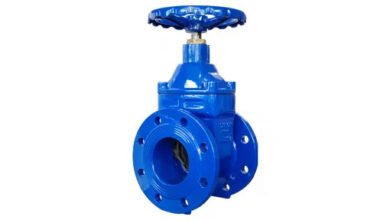How to get rid of mold and mildew on your walls

Mildew and black mold on walls are not only unsightly, but they can also be harmful to your health. Fortunately, there are ways to prevent mold on walls and keep your home healthy. Continue reading for helpful hints on how to clean mold — and prevent it from returning! Mold and mildew are the banes of most households, but luckily, it is possible to use everyday cleaning products to remove and prevent mold from returning. Mildew, on walls or other surfaces such as floors or carpets, is bad for your health, so it’s also critical to address the root cause. Continue reading for a quick three-step guide to removing mold from your home’s walls.
What is Mold & Mildew?
Mold is a fungus that grows from airborne spores. It thrives in damp, warm environments with little airflow, which is why it is common in household bathrooms and loft spaces. Mold on walls is frequently caused by humid conditions and a lack of ventilation, but it can also be caused by plumbing leaks both inside and outside the property. Moisture buildup behind the walls can also be caused by poorly-insulated heating pipes. Mildew is the most common type of black mold on walls, characterized by spots that, if left untreated, can spread to larger areas. Apply some bleach to the affected area with a cloth to see if you have mildew on your walls. Mildew is present if the dark color fades after a few minutes. If not, the patch is most likely just dirt.
Mold & Mildew on Walls:
Mold on the walls of your wall can be a major issue. Wall mold is typically caused by condensation or high humidity, which is caused by weather conditions. Poor ventilation and moisture in the air can both contribute to it. Check for cracks in windows or drain pipes that could be causing moisture buildup. Always read the directions carefully when using a specially formulated mold and mildew cleaners. Wear eye protection, gloves, and, if necessary, a face mask to protect yourself, and test the product in a small area before proceeding. You will require:
- Stiff brush
- Cloth
- Chlorine bleach
- Water
How to Remove:
It’s time to learn how to remove mildew and mold from walls! A word of caution: mold can cause allergic reactions and poor health, so if you have a significant mold problem on your walls, it may be best to seek professional assistance. When working in a smaller area, wear protective eyewear, gloves, and a face mask because contact with the spores can be harmful. While working, open the windows or use a fan in the room.
-
Prepare a chlorine bleach and water solution.
Typically, one part bleach to three parts water – or obtain a household detergent with bleach as an active ingredient, such as Domestic bleach spray.
-
Scrub the affected area
Scrub the affected area with a stiff brush.
-
Thoroughly rinse and dry
Allow drying after rinsing with a cloth and water.
If this does not work, there are products specifically formulated for mold and mildew on walls that may be more effective; however, never mix cleaning solutions as this can result in dangerous chemical reactions. More information on how to use mold and mildew removers can be found here.
How to prevent mold and mildew on walls:
After dealing with a mildew infestation on your walls, the next step is to try to prevent it from happening again. Here are your choices:
- Purchase a specialized product. An anti-microbial spray, for example, can aid in preventing the spores from resettling. Most home improvement stores sell anti-mildew paint.
- In severely affected areas, consider installing an electric dehumidifier. This is ideal for mold prevention over time.
- Consider upgrading your home’s insulation. Lousy insulation is sometimes, but not always, the source of the problem. Properly insulated walls and ceilings will be less affected by condensation and thus mold.
WRAP UP:
The best mold removal methods involve eliminating the damp conditions that mold thrives in:
- Keep bathrooms, kitchens, and other humid areas as dry and well-ventilated as possible.
- Towels and shower curtains should be spread out to dry.
- To prevent moisture from seeping into cavities and under floors, address leaks as soon as they are discovered.
Don’t be alarmed if the mold and mildew on walls reappear: this is a common occurrence, and you’re now a bit of a mold-on-walls expert!




